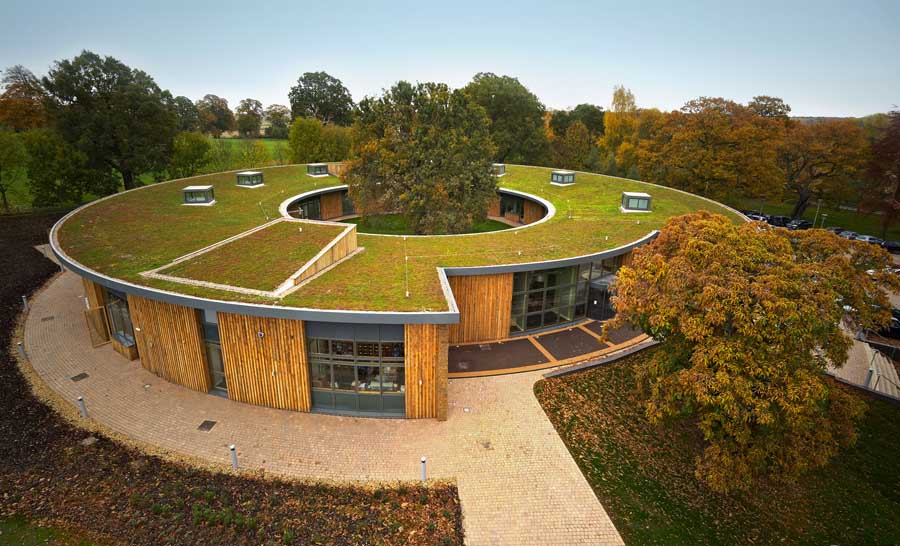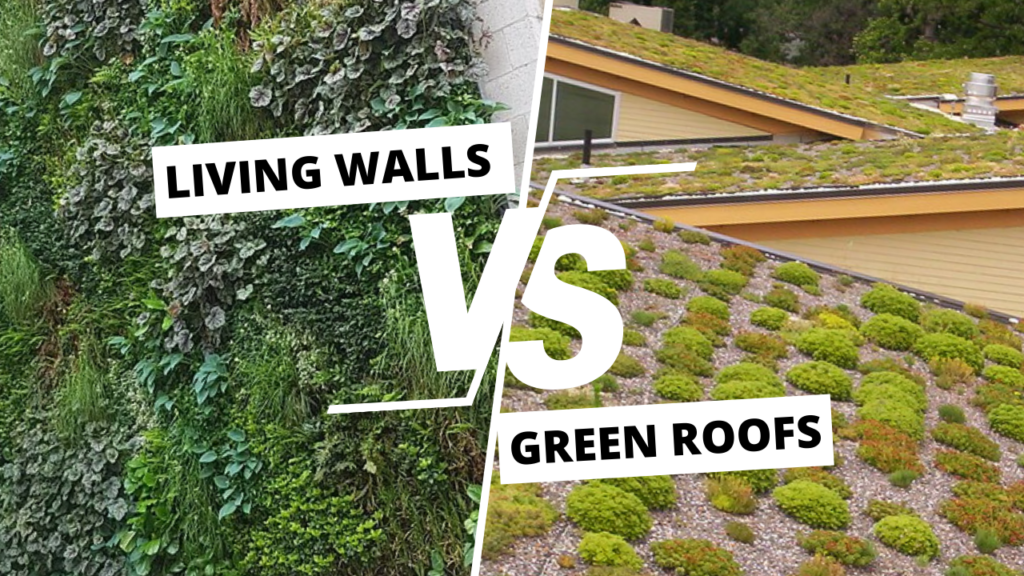As our cities continue to grow and evolve, the need for sustainable solutions has become more pressing. Living walls and green roofs are two popular ways to bring nature into urban settings. Both come with massive benefits, but they also present their own unique challenges. Let’s dive into what makes each one special and how they can transform urban spaces.

What are Living Walls?
Living walls or green walls are walls covered with plants. They can be installed both indoors and outdoors and come in various forms, such as:
- Modular panels: These are pre-planted panels that can be easily attached to a wall.
- Hydroponic systems: These systems don’t use soil. Instead, plants grow in a nutrient-rich solution.
- Fabric pockets: These use layers of fabric with pockets for the plants, which are watered through an integrated irrigation system.
Benefits of Living Walls
- Aesthetic Appeal: Living walls add a vibrant, natural look to mundane urban spaces, making them more attractive and serene.
- Air Quality Improvement: The plants help purify the air by absorbing pollutants and producing oxygen.
- Thermal Regulation: Green walls help insulate buildings, keeping them cooler in the summer and warmer in the winter.
- Noise Reduction: Living walls can act as sound barriers, reducing urban noise pollution.
- Biodiversity: They provide habitats for birds, insects, and other small creatures, boosting urban biodiversity.
Challenges of Living Walls
- Initial Cost: Installing living walls can sometimes be expensive, especially with the more complex systems like hydroponics.
- Maintenance: Living walls require regular upkeep, including watering, pruning, and pest control.
- Structural Support: Buildings need to be able to support the extra weight of the wall and its irrigation system.

What are Green Roofs?
Green roofs, also known as vegetated roofs or eco-roofs, are rooftops covered with plants. There are two main classifications:
- Extensive: Extensive green roofs have a thin layer of soil and low-maintenance plants like sedums.
- Intensive: Intensive green roofs have deeper soil that can support a variety of plants, including trees and shrubs.
Benefits of Green Roofs
- Stormwater Management: Green roofs absorb rainwater, reducing runoff and helping prevent floods and water damage.
- Energy Efficiency: They provide great insulation, cutting down on energy costs for heating and cooling.
- Urban Heat Island Effect Reduction: Green roofs help cool down cities by reducing the surrounding temperature.
- Extended Roof Lifespan: The vegetation protects the roof from UV rays and extreme temperatures, making it last longer.
- Biodiversity: Like living walls, green roofs provide habitats for various species, enhancing urban biodiversity.
Challenges of Green Roofs
- Structural Requirements: Buildings need to be strong enough to support the additional weight of the green roof.
- Cost: While they can save money in the long run, the initial installation can be pricey.
- Maintenance: Depending on the type of green roof, maintenance can range from minimal to significant.
Comparing Living Walls and Green Roofs
| Aspect | Living Walls | Green Roofs |
| Installation | Vertical installation on walls | Horizontal installation on roofs |
| Cost | Generally higher initial cost | Initial cost varies (extensive vs. intensive) |
| Maintenance | Requires regular maintenance | Maintenance varies (minimal for extensive) |
| Structural Impact | Additional weight on walls | Additional weight on roofs |
| Thermal Benefits | Insulates buildings, reducing energy consumption | Provides excellent insulation, reducing energy consumption |
| Aesthetic Impact | Adds visual appeal to walls | Creates green spaces on rooftops |
| Environmental Impact | Improves air quality, reduces noise | Manages stormwater, reduces urban heat island effect |
| Biodiversity | Enhances urban biodiversity | Enhances urban biodiversity |
Ideal Applications
Living Walls:
- Perfect for urban areas with limited horizontal space.
- Great for improving the look of building exteriors and interiors.
- Excellent for enhancing indoor air quality in offices, homes, and public buildings.
Green Roofs:
- Best for buildings with large, flat rooftops.
- Ideal for managing stormwater in cities.
- Suitable for creating a green retreat atop offices, malls, or residential buildings.
Conclusion
Both living walls and green roofs offer fantastic ways to bring greenery into urban environments, each with its own set of benefits and challenges. Choosing between them depends on your specific goals, budget, and the structure of your building. By understanding their differences, you can make an informed choice that contributes to a more sustainable and enjoyable urban life.
Whether it’s the lush greenery of a living wall or the expansive vegetation of a green roof, incorporating nature into our cities is a step toward a greener, healthier future. Contact Eco Brooklyn today for expert assistance in setting up a living wall or green roof in Brooklyn, New York!

